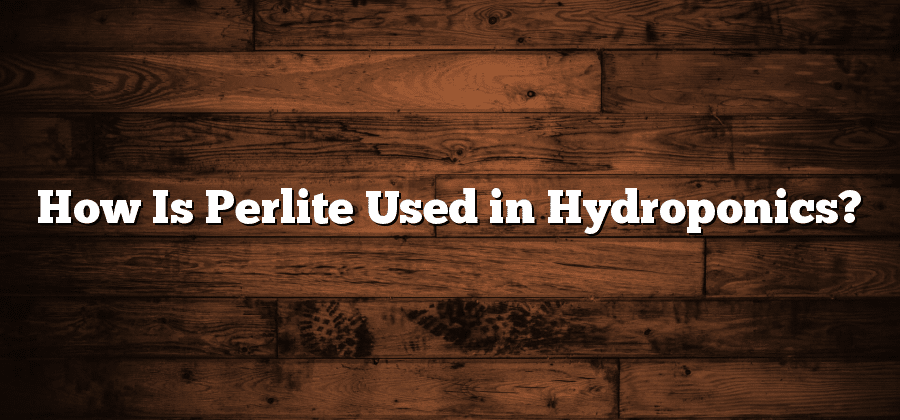Advantages of Using Perlite in Hydroponics
Perlite, a naturally occurring volcanic glass, has gained significant popularity in hydroponics due to its numerous advantages. One major advantage is its exceptional water retention capability. When used as a growing medium in hydroponic systems, perlite can absorb and hold a considerable amount of water, making it an excellent choice for controlled watering. This ensures that the plants receive an adequate water supply, fostering healthy growth and development. Additionally, perlite’s porous nature allows for sufficient aeration of the root system, preventing waterlogged conditions that can lead to root rot and other plant diseases.
Another advantage of using perlite in hydroponics is its lightweight nature. Being lightweight allows for easy handling and movement of the growing medium, making it convenient for both large-scale commercial hydroponic systems and small home gardens. Moreover, the lightness of perlite ensures that the root systems of plants are not strained under excessive weight, promoting optimal root growth and development. This characteristic also enables perlite to be mixed with other growing media, such as peat moss or coco coir, to create a customized blend that suits specific plant requirements.
Properties of Perlite for Hydroponic Systems
Perlite, a lightweight volcanic rock, is renowned for its advantageous properties when used in hydroponic systems. Its unique characteristics contribute to the success and efficiency of plant growth, making it a popular choice among hydroponic enthusiasts.
One of the main properties of perlite is its excellent water retention capabilities. The porous nature of the rock allows it to absorb and hold water, ensuring that plants have a consistent supply of moisture. This is particularly beneficial in hydroponics, where plants are grown without soil and rely solely on a nutrient-rich water solution. Additionally, perlite promotes proper aeration in the root zone. Its porous structure facilitates oxygen flow, preventing waterlogged roots and promoting healthy growth. The combination of water retention and aeration makes perlite an ideal medium for hydroponic systems.
Another notable property of perlite is its ability to provide insulation and maintain a stable temperature in hydroponic setups. By acting as a protective layer, perlite helps to regulate the temperature of the root zone, preventing extreme fluctuations that could harm plant growth. This insulation property is especially valuable in areas with varying climates or in enclosed hydroponic systems where temperature control is essential for optimal plant development.
Overall, the properties of perlite, including its water retention capabilities and insulation properties, make it a highly desirable medium for hydroponic systems. Its ability to provide moisture and oxygen to plants, while maintaining a stable temperature, creates an ideal environment for healthy growth and high yields.
Choosing the Right Perlite for Hydroponics
Perlite is a widely used growing medium in hydroponic systems, thanks to its excellent properties and numerous advantages. However, selecting the right perlite for your hydroponic setup can play a crucial role in maximizing plant growth and achieving optimal results.
When choosing perlite for hydroponics, it is essential to consider the size and quality of the particles. The particle size determines the water-holding and drainage capabilities of the perlite. Ideally, it should be coarse enough to allow proper oxygenation of the root zone while retaining enough moisture for the plants. Additionally, high-quality perlite should be free of impurities, such as excessive dust, debris, or contaminants, as these can affect the overall health and growth of the plants.
Preparing Perlite for Hydroponic Applications
When it comes to preparing perlite for hydroponic applications, there are a few key steps to follow that will ensure optimal results. First and foremost, it is important to choose the right type of perlite for your hydroponic system. There are different grades of perlite available, so it is essential to consider the specific needs of your plants and select a grade that will best meet those needs.
Next, it is crucial to properly prepare the perlite before using it in your hydroponic system. This can be done by soaking the perlite in water for a few hours to remove any dust or debris. Once soaked, the perlite should be rinsed thoroughly to ensure that it is clean and ready for use. It is important to handle the perlite with care during this process to avoid causing any damage or creating excessive dust. By taking the time to properly prepare the perlite, you can ensure that it will provide the necessary support and air circulation for your hydroponic plants.






